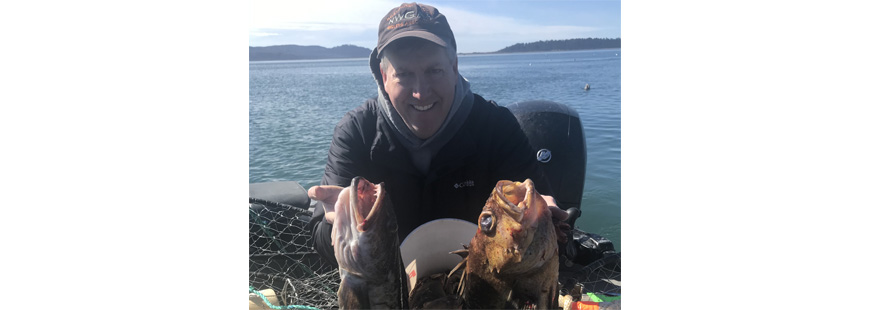Although I am not quite in the dire straits that many American families are facing in the COVID-19 crisis, things are not going all that well for the recreational sportfishing community. In 30 years of guiding, I’ve found out that it isn’t just fish that our customers need to come fishing, it’s expendable income. And now there’s the fact that we’re not allowed to travel in the first place. Shelter-in-place strategies helped bring our industry to a screeching halt in and of itself. Factor in crashing salmon returns and closed boat ramps, and the future of a fishing guide in the Pacific Northwest is left in question, for the near future anyway.
Despite the bevy of bad news coming out about our NW fisheries, groundfish remains an incredible bright spot and worthy of consideration if our industry is to have a viable future in the region. It’s been quite a ride in the recent decades.
When I first came into the guiding profession in 1996, I knew that there were inherent risks associated with relying on a natural resource to make my living. I worked in the biological field of fisheries at that time, working to preserve runs of sensitive salmon instead of harvesting them. It was rewarding work and despite a lower pay-grade, certainly more stable in the face of wild coho, chum, steelhead and spring Chinook listings that were facing our industry in the late 1990’s.
At that time, however, we had an abundant wild white sturgeon population to take advantage of, and few people pursuing sturgeon at that time. The few guides that were pursuing sturgeon were making a pretty good living at it. One boat could catch between 20 and 50 sturgeon over the course of the day, the limit of two sturgeon per person was quite achievable, and fishing in the Columbia River estuary wasn’t a bad place at all to spend the day. To this day, I credit this fishery for building the robust clientele list I have today and introducing my people over the years to other fun fisheries that still exist.
For those as old as me (a crinkly 52 years old), we remember at that time that the groundfish stocks were also taking a nose-dive. So much so that vast amounts of the ocean were closed to commercial trawling, conservative sportfishing limits were put in place, and rebuilding plans were being drafted to keep a plethora of saltwater species from getting listed under the Endangered Species Act.
So to summarize, our community went from salmon to bottomfish, to sturgeon and now back to bottomfish. Few of us would have ever imagined we’d see such a rebound of groundfish that we’d get expanded opportunity on where we can fish and what species we can once again retain.
All the credit goes to the landmark law at the time, the Magnuson-Stevens Fishery Conservation and Management Act. Of course there have been a couple of reauthorizations in the last 30+ years which have added improvements, but the success of the law since the passing of the Sustainable Fisheries Act in 1996 cannot be overlooked.
As of 2020, we have longer seasons in the deep reef area (outside of 40 fathoms), larger bag limits on some species of slope rockfish, and access to species that have been closed for the last decade or better. These long-lived species are clearly resilient, but our management strategies and the innovation of the sport and commercial fleets that have prioritized conservation first have paid dividends in the recovery and opportunity of these species.
It’s, of course, taken patience and time, but we’ve learned from our past mistakes and are gaining knowledge on a daily basis as to what these species need to thrive. We’re past the point of learning how to harvest these fish to irreparable harm; we’ve had that down for decades now. Learning the new normal will be “a thing” as we get past the crippling effects of COVID-19, but we’ve been doing it in fisheries management for quite some time already.
Besides the devastating effects on the social and economic activities COVID-19 has had on our society, it has also stifled the conservation movement or any momentum we have had in Congress. Our elected officials have had to justifiably focus on keeping our citizens safe and out of poverty. It’ll be critically important we keep them on task to make sure our fishery dependent communities continue to grow and secure a future for our fishermen.
I have recently been overwhelmed by the number of people that stepped up to testify on the Federal Draft Environmental Impact Statement on Columbia River Systems Operations that continue to put our Columbia River Basin wild salmon in jeopardy. We look forward to continuing to engage you on what needs to happen to ensure the future of our fresh and saltwater fisheries, and we look forward to the day when boat ramps re-open and we can get back to enjoying the wonderful resources we have fought so hard to protect. For now, we hope you and your families are staying safe during the COVID crisis.


